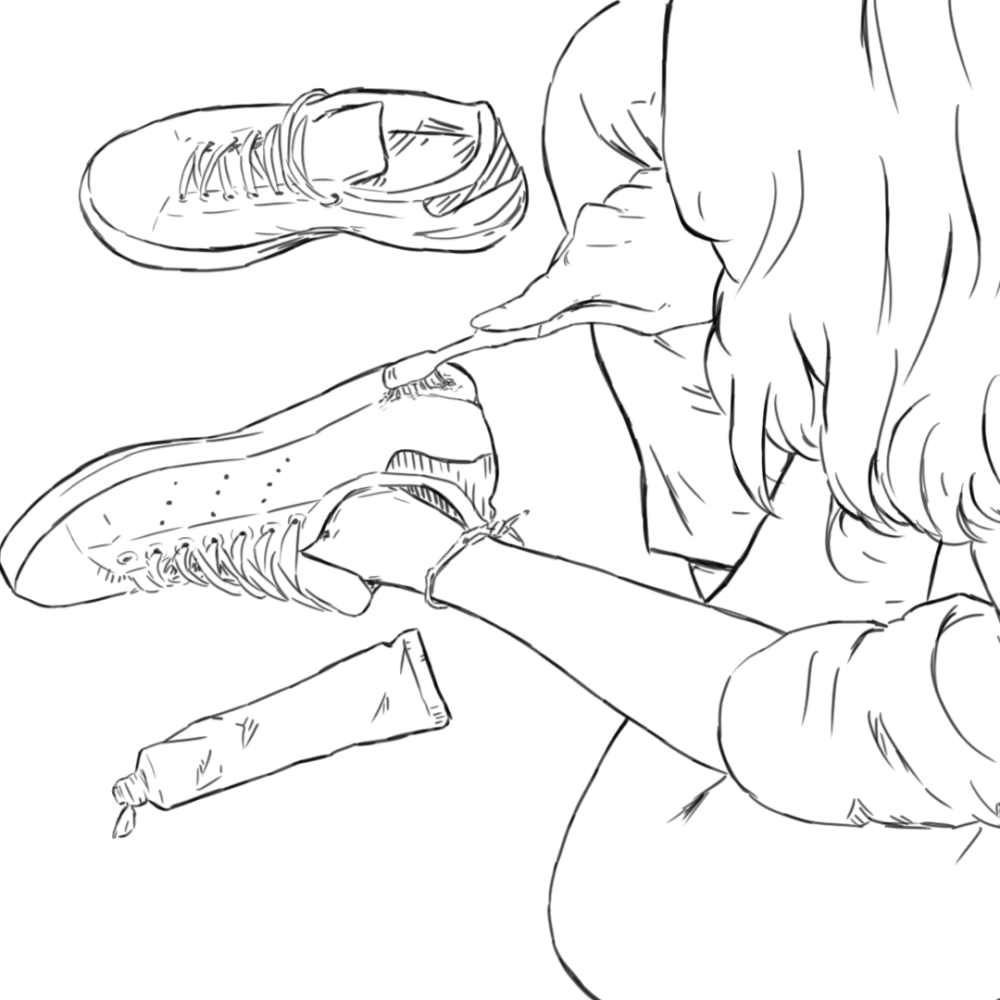
“Kaki-chan! That’s so mottainai.”
My sneakers had holes on the bottom of the sole, the white leather was now an ash-like color, and the laces were stained dark gray from the rusted steel eyelets. I had put them in a plastic shopping bag, ready to throw them out when my mom stopped me in the doorway.
“What do you mean? They’re so old and dirty… I’ve had them for about two years now, I think I can throw them out.” I shrugged. They were my favorite sneakers, but they looked far different from when I first got them from the store. The color was no longer the pearl white it originally was, and not to mention the broken bottom sole which was letting in water on rainy days. I had just received a paycheck from my part-time job and decided that I deserved better.
My mom shook her head, and waved me off. “Fine, you can throw them out if you want, but there’s still life in them.”
Mottainai. Wasteful.

Feeling a little guilty and now unprepared to throw them out, I left my plastic bag by the doorstep and decided I would take them out tomorrow when I wasn’t under the scrutiny of anyone else.
In The Corner of the Internet,
I returned to my room and decided to pass the time on Instagram, scrolling through the different shoes I could buy to replace my old ones. Nike Air Force 1’s? Or maybe a classic pair of Converse. The Adidas Continental 80’s look cool. What else could I buy?
As I went deeper into the world of sneakerheads, I eventually fell into the niche of sneaker customizations. Artists all over the world would take basic sneakers and paint or embroider them to their client’s needs. The videos were hypnotic, and I loved watching individuals peel away blue artist’s tape to showcase a clean, finished shoe full of color or intricate designs. Some would add glitter, some would add jewels, others would allow their own freehand paintings to dominate the front flap, and others would use bold color blocks to make the shoe stand out.
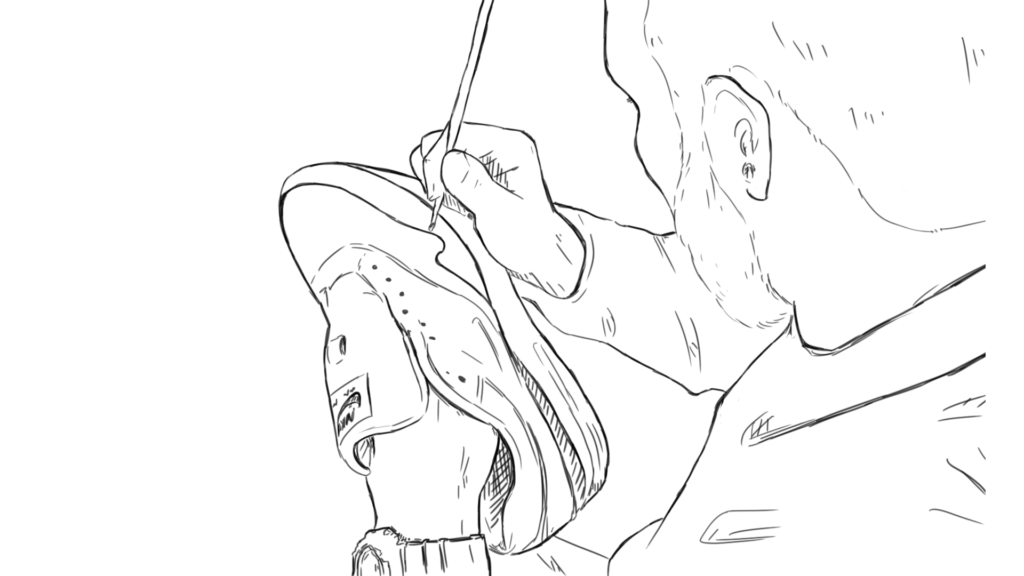
As I watched and wondered about their craft, I thought about how they were able to take such a generic shoe and add so much personality to it. The process was amazing and almost therapeutic, the way they handled the leather, cared for it, and gave it life. Maybe my old sneakers still had some life in them too.
Saving My Shoes
The next morning I pulled my sneakers out of their plastic bag, and got to work.
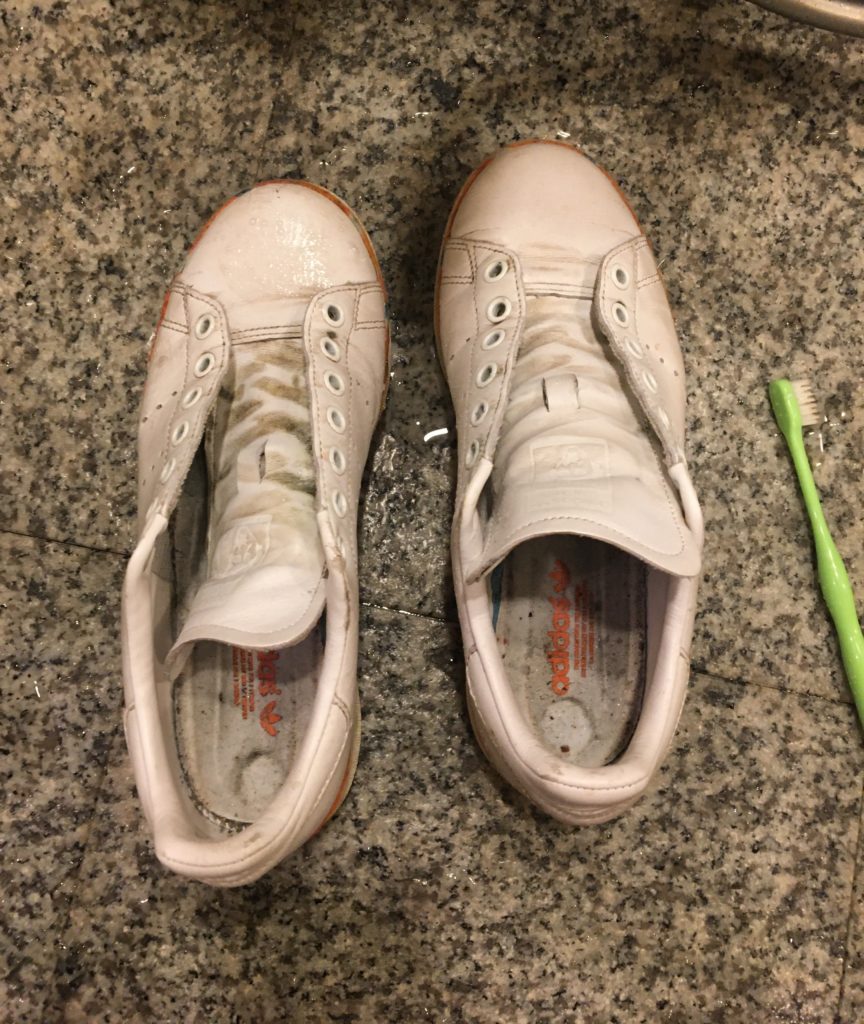
The first obvious step was to clean the white leather. Using an old toothbrush and some whitening toothpaste, I began scrubbing the leather softly in little circles. First I was uncomfortable handling wet old shoes, but I later began to find satisfaction in the process. I watched the white toothpaste slowly turn into light gray foam, the little bubbles lifting the grime off of the surface of the leather. Minty fresh shoes, I thought, silently pleased with myself.

I cleaned the shoelaces, added new in-soles, and was ready to finish the restoration process. Eroded over the months by my shuffling feet, I had managed to break through the rubber layer and expose the inner foam of the shoe: only until this was fixed, could I be satisfied.
Instead of using an over-the-counter product like shoe goo, I took my shoes to a professional and had them fill in the bottom sole. The fill was a slightly different color rubber, but I liked the color block aesthetic. At this final step, my shoe was officially modified– there was now only one kind of sneaker like this in the entire world, and I was the lucky girl who owned it.
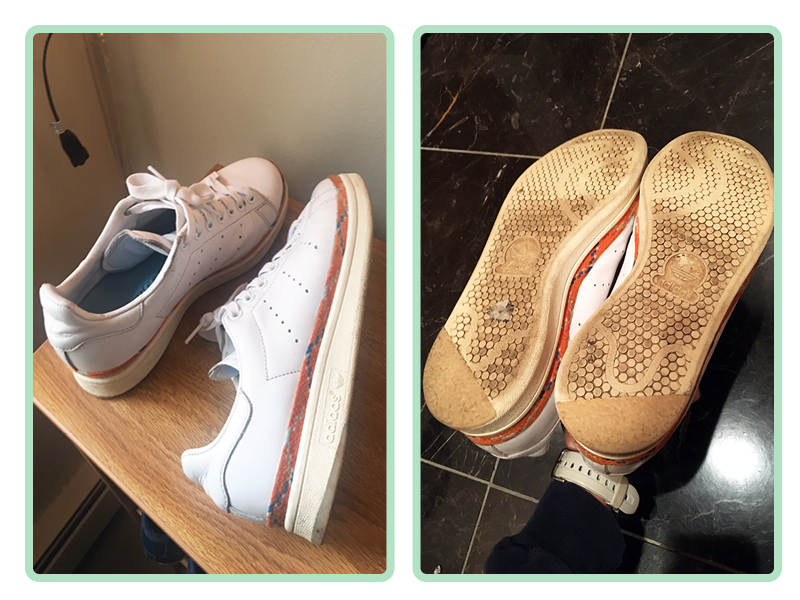
Mottainai: A Consumerism Counterculture
Restoring shoes doesn’t really save you time. It would’ve been much faster to buy the same pair of sneakers online, and to have them shipped to my door. It also didn’t save me much money either, as the in-soles themselves cost $50 and to have the bottom rubber soles repaired cost $25.
And yet, here I am thinking when my shoes get run down again, I want to repair them.
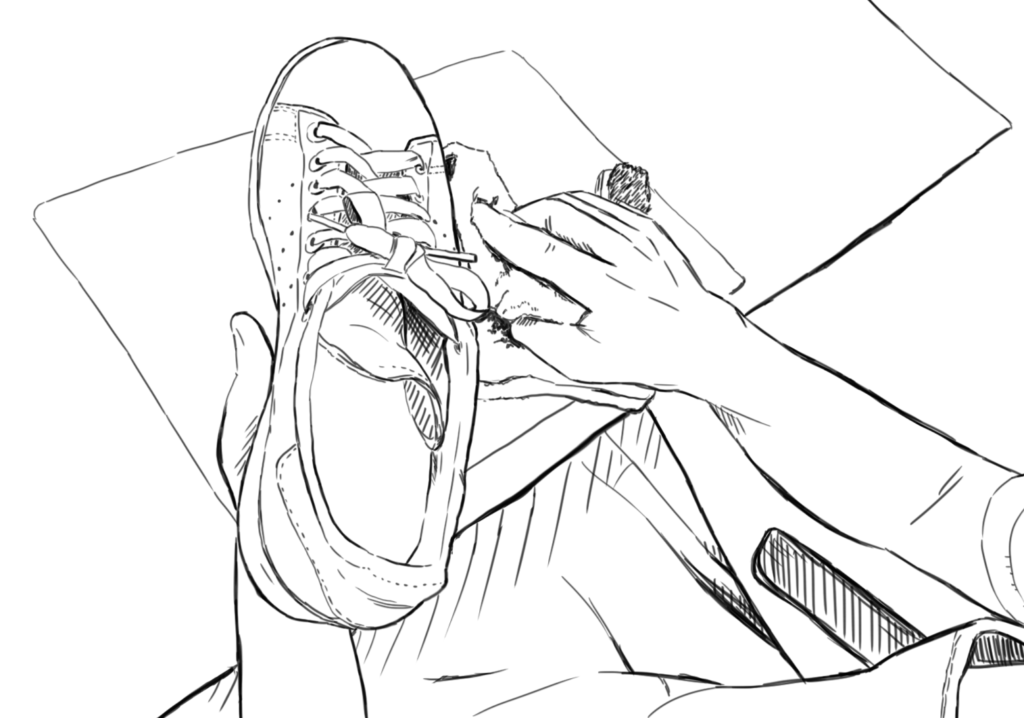
In the age of Amazon and instant gratification, it’s easy to be focused on acquiring more. There’s no denying it, consumerism is fun and it brings pleasure. It’s also increasingly becoming easier for us to shop. But as any rich person can tell you, the gratification of new and shiny objects can be limited.
The Japanese concept of mottainai, to try and live without waste, is not about living frugally. It’s a consumerism counterculture. Of course it is often the more economical way of living, to reuse and recycle rather than buy new things all the time, but living frugally is self-denying oneself of the nicer things in life. Mottainai is not this.
Rather than buying simply because you can, mottainai is about finding joy in the act of savoring. Because much like how gratitude nurtures happiness, appreciation for what we already have is about cultivating joy. By finding ways to reuse and restore, I’m not necessarily concerned with the limitations of what I can or can’t have, but simply continuing to care for the things that I already enjoy.
Bringing Mottainai Into Your Life
Translated directly, “mottainai” means “wasteful”. But rather than just a word, in Japanese culture it is interpreted as a saying, often taught to little children about the importance of appreciating the things you have. To people who throw away their unused clothes or those who buy plastic water bottles, the word might pop up in their mind before they decide to repair their clothes or wait until they can refill an old water bottle.
Mottainai is an active exercise of introspection, of taking a moment to see value in the things that may seem lackluster. In the oddest way, it brings peace and calmness to the mind that the excitement of new stuff can’t. As I gently scrubbed my shoes and realized that there was still life in what I was prepared to throw away, I found an important mindfulness practice.
If you find yourself in a position where you feel as though you need something new, consider this question: is this mottainai?
It’s not about self-denying. Life should not be driven by a scarcity mindset. But while we shouldn’t be denying ourselves of the things we love, maybe greater joy can be found in the art of reusing and recycling what we already have.
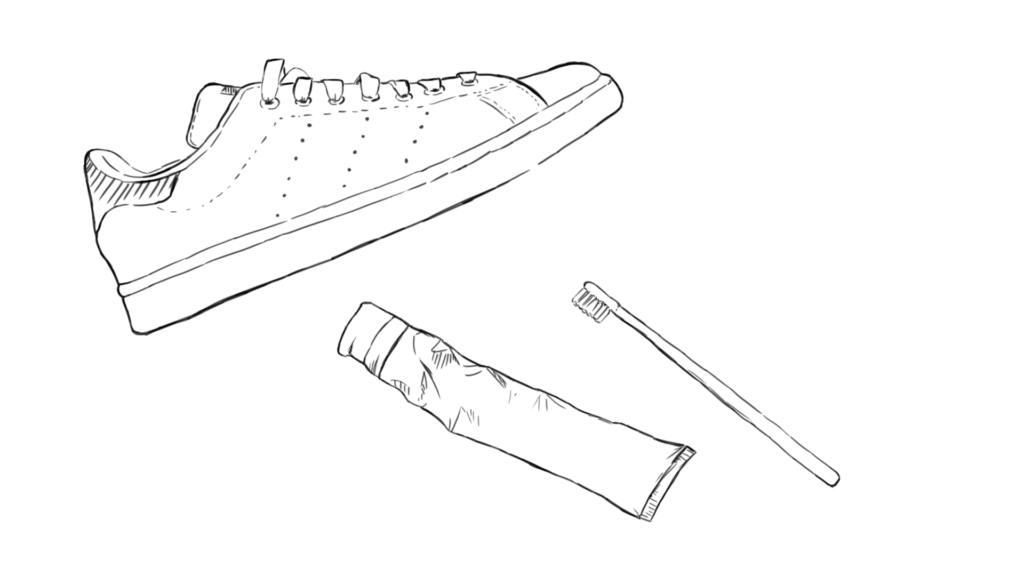
***
If you enjoyed this article, please leave me a message at kokumura@kakikata.space! I would be more than happy to answer any questions or comments you may have. Please reach out, I would love to hear from you!
Warm regards,
Kaki